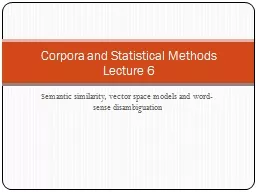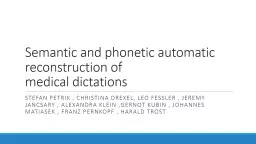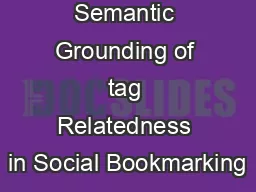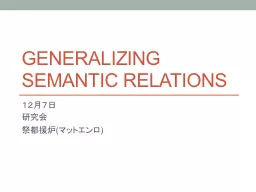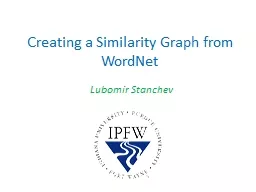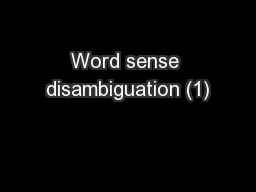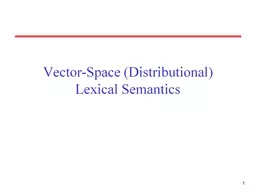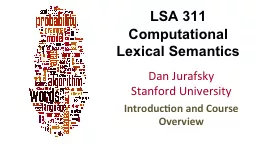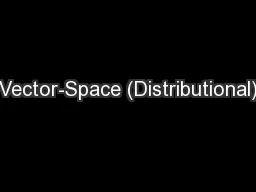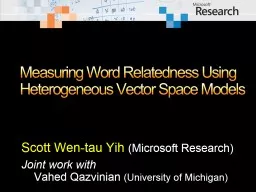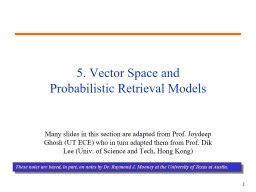PPT-Semantic similarity, vector space models and word-sense dis
Author : trish-goza | Published Date : 2017-04-11
Corpora and Statistical Methods Lecture 6 Word sense disambiguation Part 2 What are word senses Cognitive definition mental representation of meaning used in psychological
Presentation Embed Code
Download Presentation
Download Presentation The PPT/PDF document "Semantic similarity, vector space models..." is the property of its rightful owner. Permission is granted to download and print the materials on this website for personal, non-commercial use only, and to display it on your personal computer provided you do not modify the materials and that you retain all copyright notices contained in the materials. By downloading content from our website, you accept the terms of this agreement.
Semantic similarity, vector space models and word-sense dis: Transcript
Download Rules Of Document
"Semantic similarity, vector space models and word-sense dis"The content belongs to its owner. You may download and print it for personal use, without modification, and keep all copyright notices. By downloading, you agree to these terms.
Related Documents

